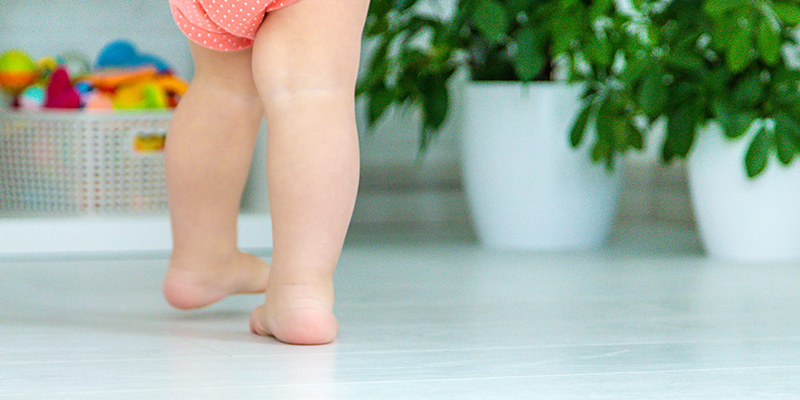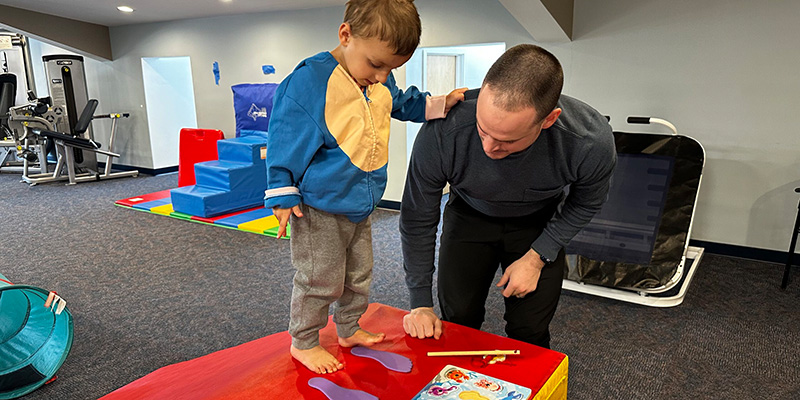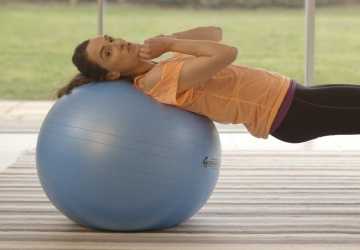Pigeon-toed walking, clinically known as intoeing, is a common gait pattern in children where the toes point inward during movement. Recognizing and addressing this condition early is crucial for healthy development, as timely interventions can lead to significant improvements in a child's physical and social growth.
Pigeon-toed walking, clinically known as in-toeing, is a typical gait pattern in children in which the toes point inward during movement. Recognizing and addressing this condition early is crucial for healthy development, as timely interventions can significantly improve a child's physical and social growth.

This article delves into the various causes of in-toeing, its implications for a child's mobility and confidence, and effective corrective measures to support children in overcoming this condition. It ultimately empowers parents and educators to foster healthier walking habits.
Understanding Pigeon-Toeing In Children
Pigeon-toeing, or in-toeing, refers to a condition in which a child's toes deviate inward instead of pointing straight ahead while standing or walking. This phenomenon is notably prevalent, with studies indicating that approximately 10% to 15% of preschool-aged children are affected, demonstrating its commonality in early childhood.
The presentation of pigeon-toeing can vary significantly among children based on the severity of the condition. In mild cases, children may have just a minor inward rotation of the feet, primarily noticeable during movement rather than at rest. For instance, a child might stand with their feet outward but begin to walk with the toes converging inward.
On the other hand, severe cases can exhibit greater toe angulation, more profoundly impacting a child's gait and stability. In such instances, children may frequently trip or have challenges maintaining balance due to their inward-facing feet. Although pigeon-toeing often resolves naturally as children grow and develop better alignment, regular monitoring and gentle encouragement of physical activity can aid in promoting better postural habits and walking techniques.
Causes Of Pigeon-Toed Walking
Pigeon-toed walking, or in-toeing, arises from various factors influencing children's physical development. Understanding these causes is essential for parents and educators.
1. Genetic Factors:
A significant contributor to pigeon-toeing is family history. If parents or siblings have experienced in-toeing during their early years, there exists a heightened likelihood that this condition may manifest in subsequent generations. Research indicates that specific genetic traits can influence foot positioning, suggesting that heredity plays a role in this phenomenon.
2. Developmental Factors:
Fetal positioning within the womb can critically affect a child's walking patterns. Limited space during fetal development may lead to a preference for a pigeon-toed stance. Moreover, early development stages, such as crawling and walking, can impact a child's gait.
3. Muscular and Skeletal Issues:
Certain physical conditions predispose children to develop pigeon-toeing. For example, flat feet or collapsed arches can disrupt natural foot alignment, causing inward positioning. Similarly, an imbalance in muscle development affecting the hips and legs can contribute to this walking pattern.
4. Environmental Factors:
The type of shoes children wear, and their overall physical activity levels can significantly influence their walking style. Shoes that don't fit well may worsen in-toeing, while a lack of engagement in physical activities can lead to weakened muscles that detrimentally affect foot stability. Ensuring children wear appropriate, supportive footwear and encouraging active play can support proper musculoskeletal development.
Potential Implications Of Pigeon-Toeing
Pigeon-toeing can considerably impact a child's self-esteem and social interactions. As children become aware of their unique walking patterns, they might experience self-consciousness, which could lead to withdrawing from social activities. Ignoring this condition may result in complications like knee or hip problems, hindering a child's participation in physical activities and thus impacting their engagement in sports or play.
Moreover, parental concerns about their child's mobility or acceptance can adversely affect their self-image; if parents vocally express worries, it may result in feelings of inadequacy that hinder full participation in developmental milestones. Proactively addressing these concerns can help foster a positive self-image and encourage healthy social interactions.
When To Seek Professional Help
Parents should look for specific indicators that signal it's time to consult a pediatrician or specialist regarding pigeon-toeing. Signs include severe toeing that doesn't improve as the child ages, experiences pain while walking or running, or difficulties during play. Additionally, monitoring growth and developmental milestones is crucial; any regression or failure to achieve certain milestones should prompt immediate professional guidance. Timely consultations help ensure the right interventions are in place to foster healthy development trajectories for children.
Strategies To Correct Pigeon-Toed Walking
Correcting pigeon-toed walking involves a comprehensive approach tailored to the needs of children. Here are several effective strategies:
1. Physical Therapy:
Enrolling children in targeted physical therapy can help improve muscle strength and coordination. Engaging in toe walking, heel walking, and balance activities can facilitate proper gait patterns while enhancing overall foot function. Regular sessions with a certified therapist can help track and promote progress effectively.

2. Footwear Recommendations:
Choosing shoes that offer adequate support is vital. Footwear should feature a stiff heel counter and appropriate arch support while avoiding overly flexible soles. Well-fitted shoes can positively influence foot positioning and encourage a stable walking pattern.
3. Foot Orthotics:
Custom orthotics or splints may be warranted when structural alignment is a concern. These devices support the arch and correct alignment, guiding the foot into a more appropriate position. Consulting with a paediatrician or podiatrist is essential to determine the necessity of orthotic interventions.
4. Taping Techniques:
Taping can temporarily assist in managing foot positioning. Kinesiology or rigid tape can be applied to encourage correct alignment and improve proprioceptive feedback. Parents should consult health professionals for best practices in effective taping techniques.
By implementing these strategies, parents can significantly assist their children in developing healthier walking habits that promote confidence and mobility.
Diy Exercises Parents Can Try At Home
To further aid in correcting pigeon-toeing, parents can incorporate simple exercises at home that encourage outward foot rotation and bolster balance. A beneficial exercise is a single-leg balance, where a child stands on one foot while raising the opposite knee to hip height, strengthening the legs and enhancing stability. Another fun activity can involve walking along a straight line marked on the floor, such as tape or chalk, consciously practising walking with toes pointed forward or outward.
Activities such as "cowboy kicks" can also be engaging: instruct your child to pretend to kick a ball sideways while standing, encouraging external rotation of the feet. Consistent supervision during these exercises is vital to ensure safety and effectiveness. Integrating these delightful activities into playtime promotes better walking patterns and supports overall development.
Conclusion
Addressing pigeon-toeing early on is vital for a child's holistic development. Parents should actively seek professional guidance to ensure proper support. Most children will outgrow this condition through appropriate interventions, facilitating a healthier walking pattern and heightened confidence as they grow up.


